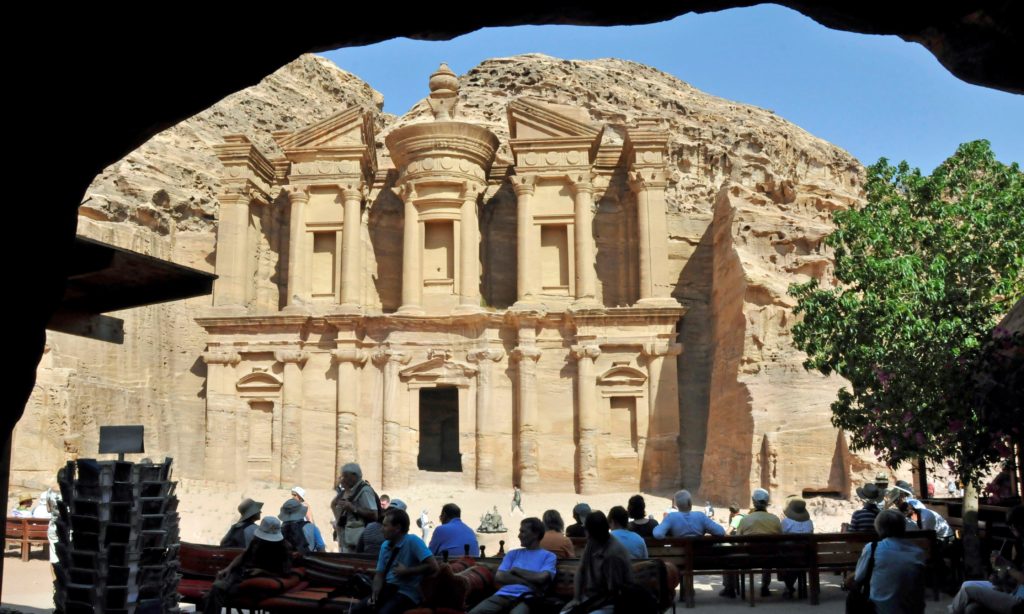
Casual visitors to Petra may assume that the carved monument just inside the entrance is the best that ancient city has to offer. A more imposing monument awaits anyone willing to climb a mountain to see it.
In the fourth century B.C., the Nabateans, Arabs who controlled lucrative caravan trade routes, founded Petra as their capital in a remote mountain basin about 115 miles south of Amman, Jordan. By the first century B.C., the city covered several thousand acres and had a population of about 30,000. Its structures, many incorporating classic Greek architectural elements, were built both on the valley floor and carved into the faces of the mountains. The “Treasury,” once erroneously thought to contain gold, is the most famous of Petra’s structures, carved into a pink sandstone cliff at the end of the siq, a winding and narrow gorge that leads into the city from the east.
Two miles or so northwest of the Treasury, a steep mountain path starting near the Basin Restaurant leads to a clearing high above the valley floor. Donkeys are available for those not wanting or able to climb the more than 800 rock steps. The trek to the top, which takes about 45 minutes, passes by Bedouins selling souvenirs and refreshments and offers a spectacular view of the surrounding areas. The winding path ends at a massive building carved into the mountain crest that is both taller and much wider than the Treasury. Dubbed the “Monastery” because of its later use as a church, it was probably originally a temple for worshipping Obadas, a deified Nabatean king. Celebrants congregated in the once colonnaded flat area in front of the temple. A modern café inside a cave across from the Monastery allows weary climbers to relax and enjoy the surroundings before heading back down.
Comments are closed.